Match the intermediates given in Column I with their probable structure in Column II.

(i)→(a),(b),(ii)→(a),(iii)→(a),(b).
Note : Please note that simple free radicals are trigonal planar but bridge head free radicals are pyramidal. Similarly, simple carbanions are pyramidal while those in which the carbon atom carrying the negative charge is adjacent to a double bond or a benzene ring are trigonal planar.
Topper's Solved these Questions
- ORGANIC CHEMISTRY-SOME BASIC PRINCIPLES TECHNIQUESBOOK - PRADEEPCHAPTER - ORGANIC CHEMISTRY-SOME BASIC PRINCIPLES TECHNIQUESEXERCISE - NCERT EXEMPLAR PROBLEMS WITH ANSWERS, HINTS AND SOLUTIONS (Assertion and Reason Type Questions)
6 Videos
- ORGANIC CHEMISTRY-SOME BASIC PRINCIPLES TECHNIQUESBOOK - PRADEEPCHAPTER - ORGANIC CHEMISTRY-SOME BASIC PRINCIPLES TECHNIQUESEXERCISE - NCERT EXEMPLAR PROBLEMS WITH ANSWERS, HINTS AND SOLUTIONS (Long Answer Type Questions)
6 Videos
- ORGANIC CHEMISTRY-SOME BASIC PRINCIPLES TECHNIQUESBOOK - PRADEEPCHAPTER - ORGANIC CHEMISTRY-SOME BASIC PRINCIPLES TECHNIQUESEXERCISE - NCERT EXEMPLAR PROBLEMS WITH ANSWERS, HINTS AND SOLUTIONS (Short Answer Questions)
27 Videos
- HYDROGEN BOOK - PRADEEPCHAPTER - HYDROGEN EXERCISE - COMPETITION FOCUS (Assertion-Reason Type Questions) Type 2
15 Videos
- P-BLOCK ELEMENTS (NITROGEN FAMILY)BOOK - PRADEEPCHAPTER - P-BLOCK ELEMENTS (NITROGEN FAMILY)EXERCISE - Competition focus jee(main and advanced)/ medical entrance special) (VIII. Assertion-Reason Type Questions)
10 Videos
Similar Questions
Match the reactions given in Column I with the suitable reagents given in Column II.
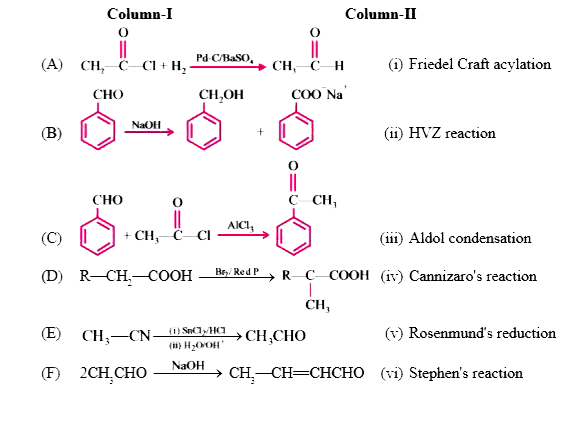 .
.
View SolutionMatch the reactions given in Column I with the suitable reagents given in Column II.
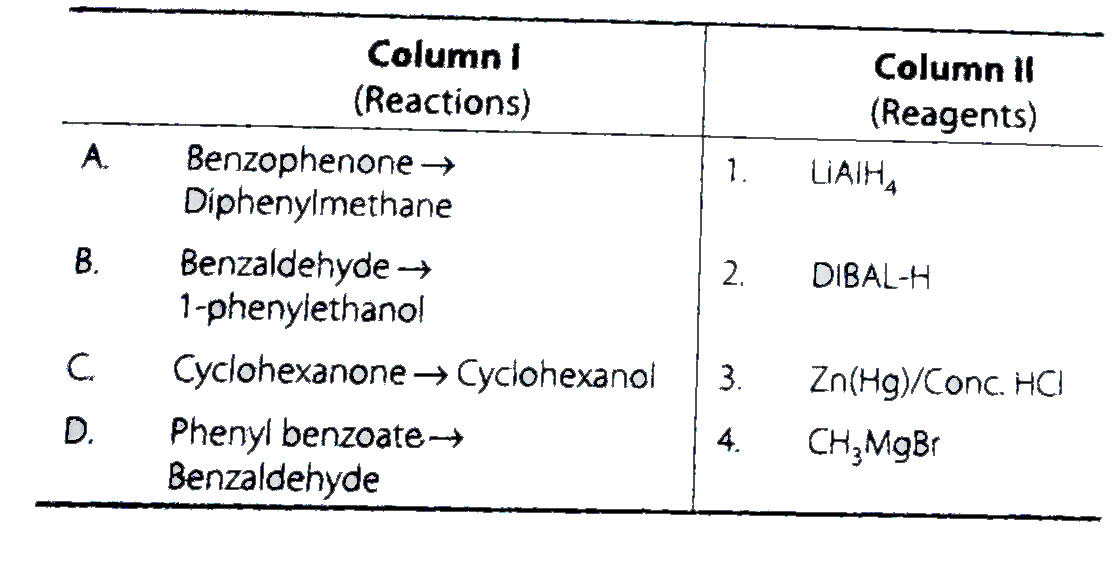
View SolutionMatch the statements given in Column I with the oxidation states given in Column II.

View SolutionMatch the reactions given in Column I with the types of reactions given in Column II.

View SolutionMatch the reactions given in Column I with the types of reactions given in Column II.

View SolutionMatch the reactions given in Column I with the types of reactions given in Column II.

View SolutionMatch the polymers given in Column I with their commercial names given in Column II.
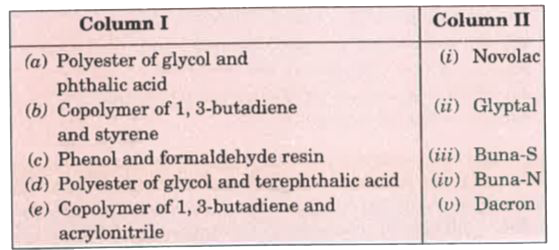
View SolutionMatch the organisms given in Column I with their mode of nutrition given in Column II.
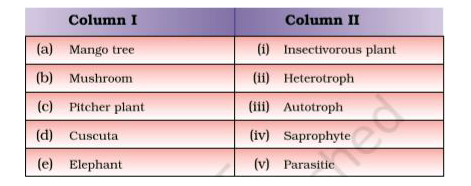
View SolutionMatch the structures given in Column I with the names in Column II.

View SolutionMatch the structures given in Column I with the names in Column II
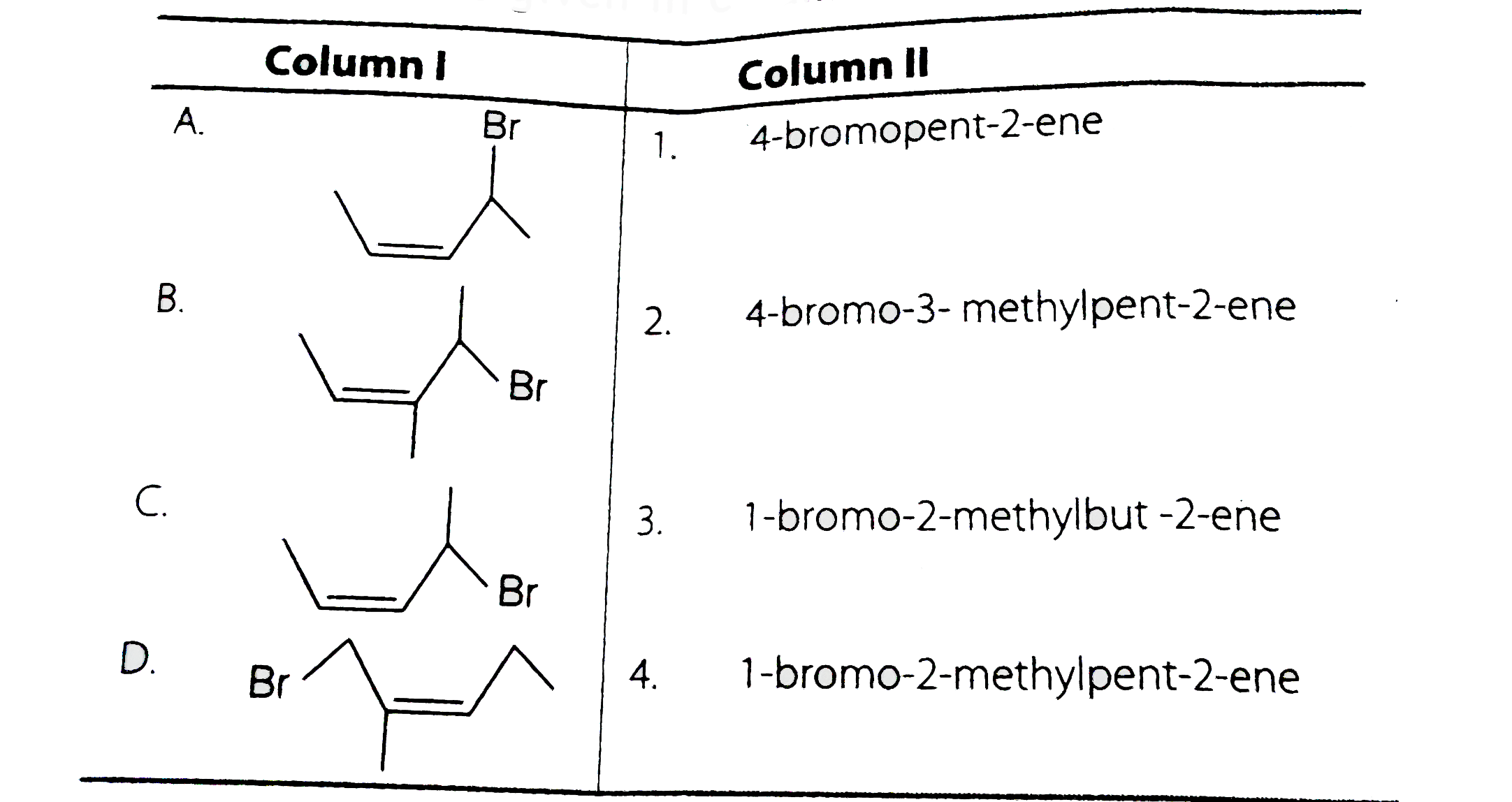
View Solution
